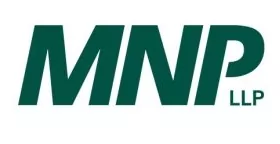Here's a real-life example of an interesting difference between IFRS (International Financial Reporting Standards) and old Canadian GAAP (Generally Accepted Accounting Principles):
"The terms of the Company's interest-bearing loans and borrowings were disclosed in note 12 to the Company's (earlier) annual financial statements. As noted therein, the terms of the 2013 and 2016 Convertible Notes provide that they are convertible into common shares of the Company, at the option of the holder, at a defined conversion rate; however, the Company may elect to deliver, in lieu of its common shares, cash or a combination of cash and common shares. The Company's option to deliver cash on the conversion date in lieu of common shares gives rise to an embedded derivative financial liability, measured separately at fair value through profit or loss because it is not closely related to the underlying Convertible Notes. On initial recognition, for each series of the Convertible Notes, the Company measured the derivative financial liability at fair value, and measured the carrying value of the underlying Convertible Notes at the difference between this amount and the proceeds of issue. Subsequent to initial recognition, the Company measures the derivative financial liability at fair value at each reporting date, recognizing changes in the fair value in the income statement, and accretes the carrying value of the underlying Convertible Notes to their face value using the effective interest method."
Under old Canadian GAAP, the company analyzed the conversion feature as equity, based on its unconditional ability to settle the instrument on conversion by issuing its own shares. For practitioners still in that mindset, it might seem impossible that IFRS could require anything else – how would a liability ever flow out of a feature that imposes no obligation on the issuer ever to deliver cash? And yet so it goes. IAS 32.26 says: "When a derivative financial instrument gives one party a choice over how it is settled (e.g. the issuer or the holder can choose settlement net in cash or by exchanging shares for cash), it is a financial asset or a financial liability unless all of the settlement alternatives would result in it being an equity instrument." For the kind of instrument this company describes, the settlement feature constitutes a derivative instrument embedded within the host contract, falling directly into the scope of this paragraph. It follows then, that it has to be separated from the debt instrument and accounted for separately as a derivative instrument. There is an exception, namely, if the entity selects the alternative (presumably, in most cases, even less palatable) option of designating the entire combined instrument as a financial liability at fair value through profit or loss.
Equity Versus Liability
It's not clear (to me anyway) whether that paragraph in IAS 32 was drafted with this kind of situation in mind. The example the standard provides to illustrate the concept is "a share option that the issuer can decide to settle net in cash or by exchanging its own shares for cash." The premise then, is that for a conventional equity-settled share option, certainty exists at the time it's issued over how it might affect the issuer's assets and liabilities in the future. It's this certainty which is inherent to the IFRS concept of a "residual interest in the entity's assets after deducting all of its liabilities." As soon as the instrument comes attached with a cash settlement option – even if it's in the issuer's power never to exercise it – then its impact on those economic resources becomes uncertain, but only to an extent that precludes regarding the instrument as a residual interest. That IFRS places as much weight on assessing the range of economic consequences attaching to an instrument as on a narrow reading of contractual obligations is clear in the basis for conclusions on this area, which notes: "The Board concluded that entities should not be able to circumvent the accounting requirements for financial assets and financial liabilities simply by including an option to settle a contract through the exchange of a fixed number of shares for a fixed amount."
Measurement Difficulties
Still, for the kind of facility described here, this rationale might not seem to fit very well. The issuer's cash settlement option would normally be added to provide some flexibility – for instance, to provide a break on the level of dilution which would result from conversion, should the issuer's share price go through the roof - rather than with any accounting "circumvention" in mind. The bulk of the instrument (absent what might have been assigned to the equity conversion option) would have been treated as a financial liability in any event. Valuing the embedded derivative in a case like this becomes an unusually mind-bending exercise. The theoretical object, as always, is to identify the derivative's value on a standalone basis to a market participant, not its value to the issuer, but it's hard to articulate what such a market participant would actually have, let alone what he or she would be willing to pay for it. Even more than usual, the fair value measurement derived from applying a conventional measurement model to such a position seems weirdly abstract. In some cases, for example where the issuer's shares weren't publicly traded, it might be plausible to rationalize the feature couldn't possibly have a material value, without going through all the valuation motions. In the example I cited though, the effect seems to have been both highly material and highly volatile.
When the Canadian Institute of Chartered Accountants (CICA)'s IFRS Discussion Group recently discussed this kind of instrument, the group members found the application of IAS to be "quite clear." They noted though, "that the accounting result to treat the conversion feature as a liability continues to be a surprise in practice."
Beyond that, the group seemed to throw up its hands, beyond the following unsurprising advice: "Group members noted that there are many conversion features that can prevent the issuer from classifying a conversion option in equity. Group members observed that convertible debentures are complicated and entities issuing these instruments should be prepared to complete the necessary analysis and obtain help when necessary to avoid unexpected accounting consequences." Fair enough, although in the same manner that some people are said to be "beyond therapy," you might just think this aspect of things is beyond anyone's help.
The content of this article is intended to provide a general guide to the subject matter. Specialist advice should be sought about your specific circumstances.

